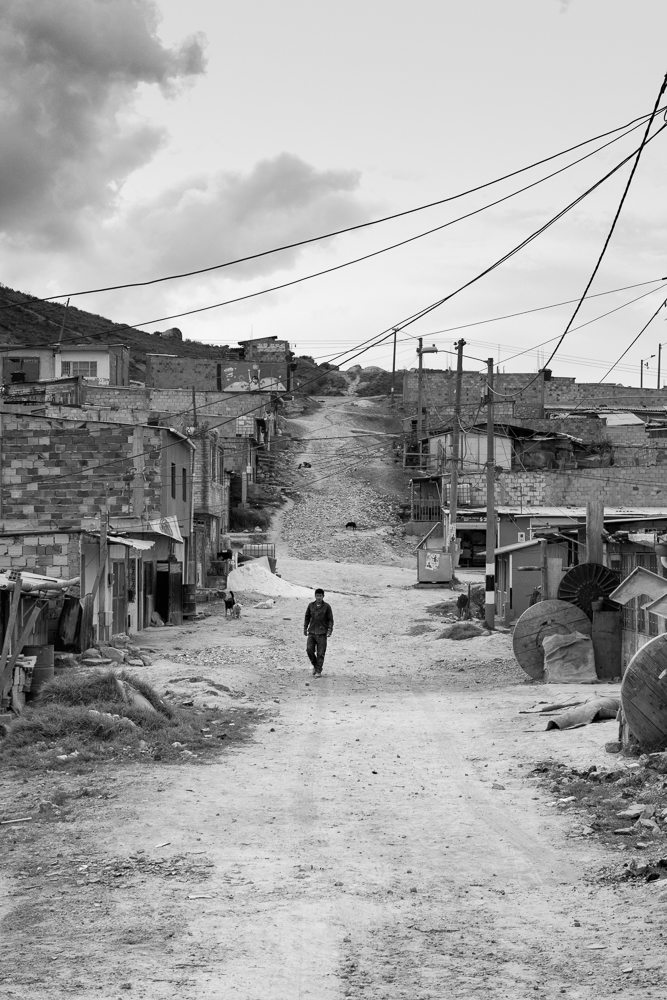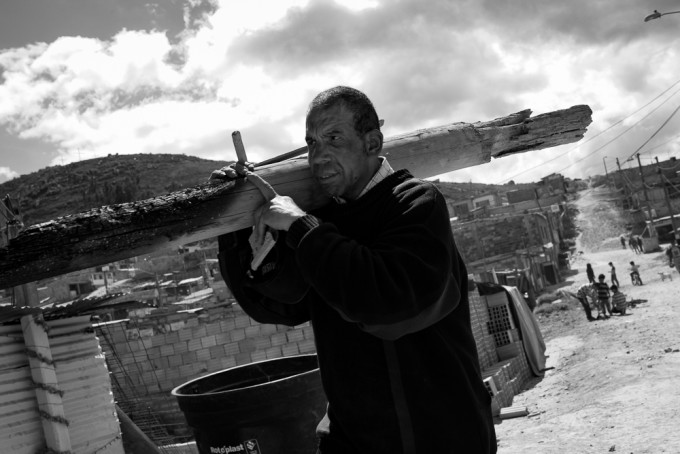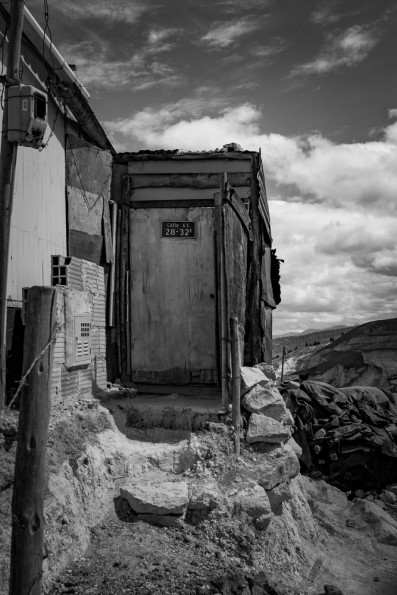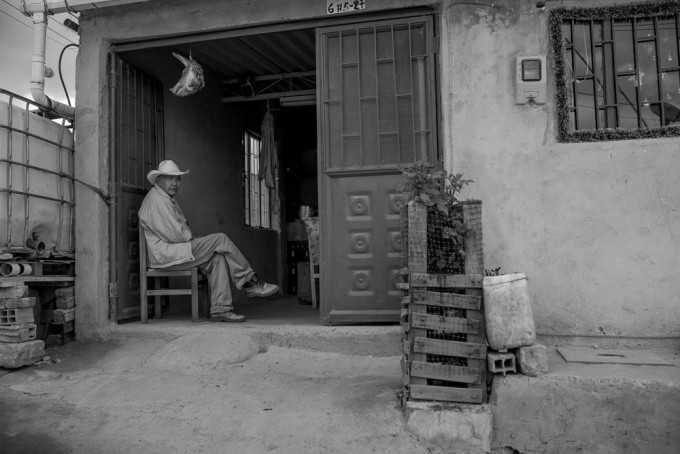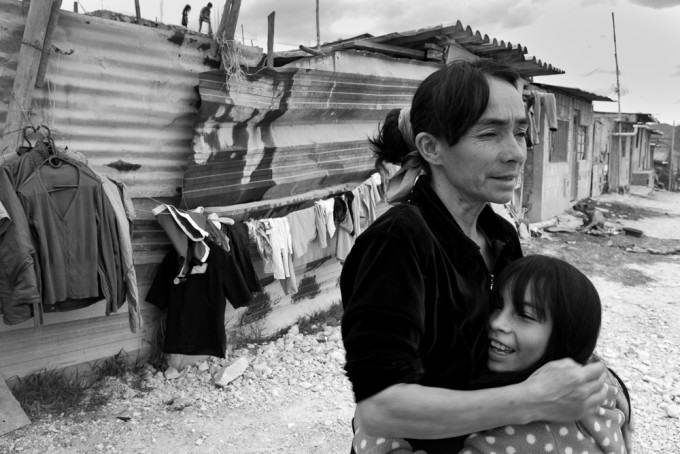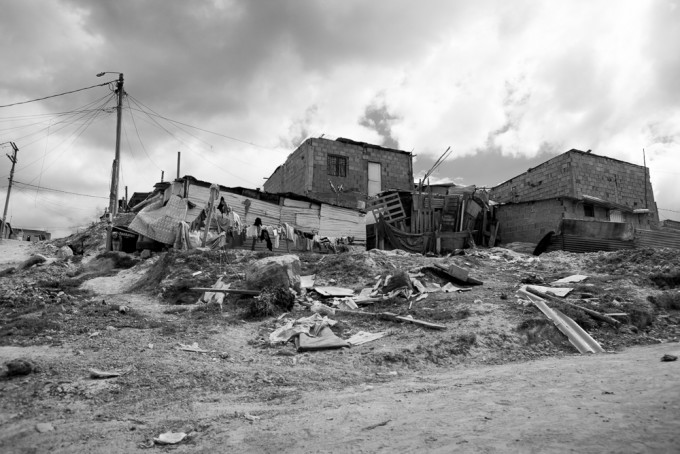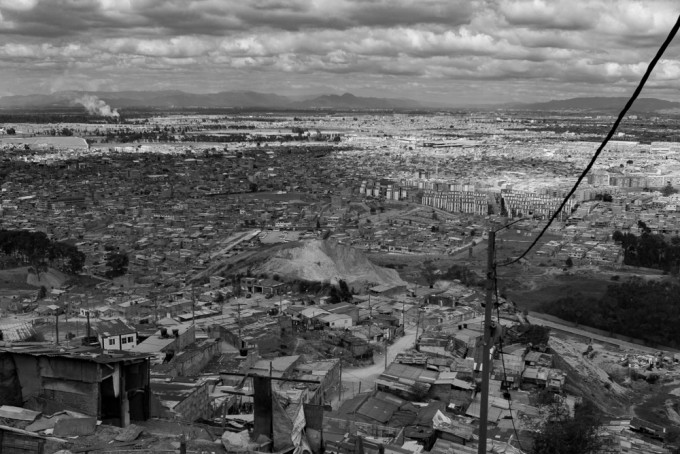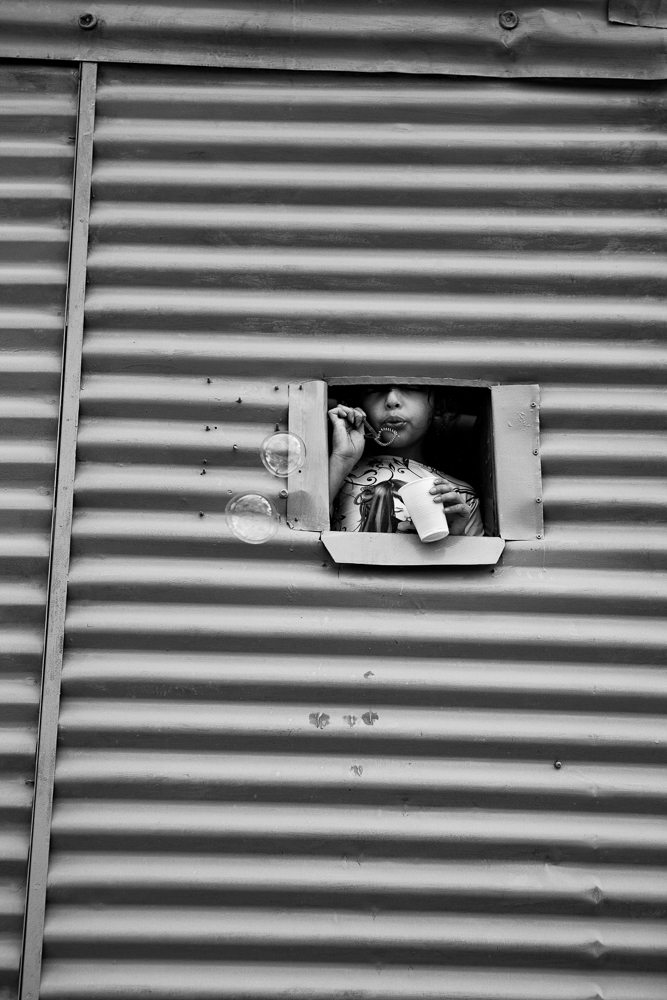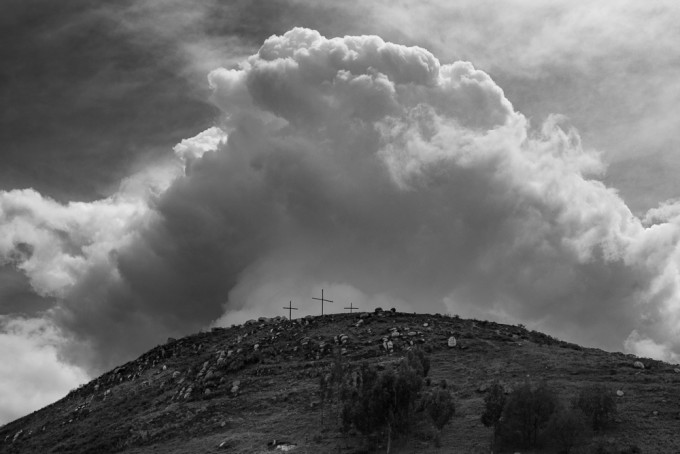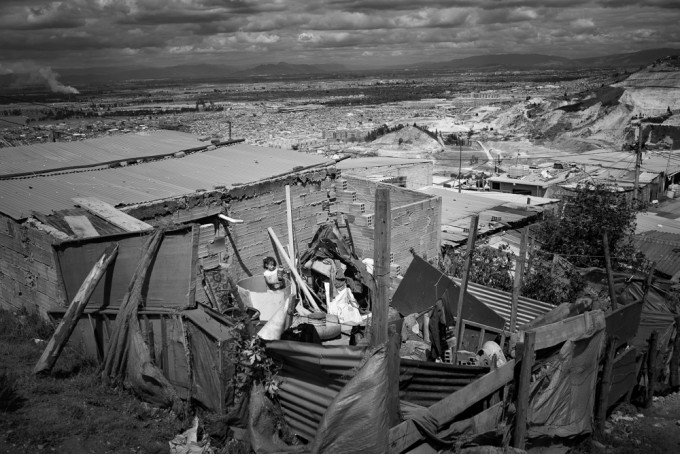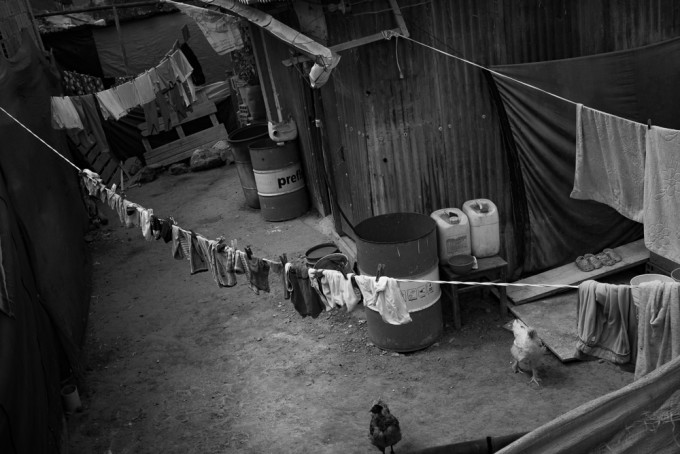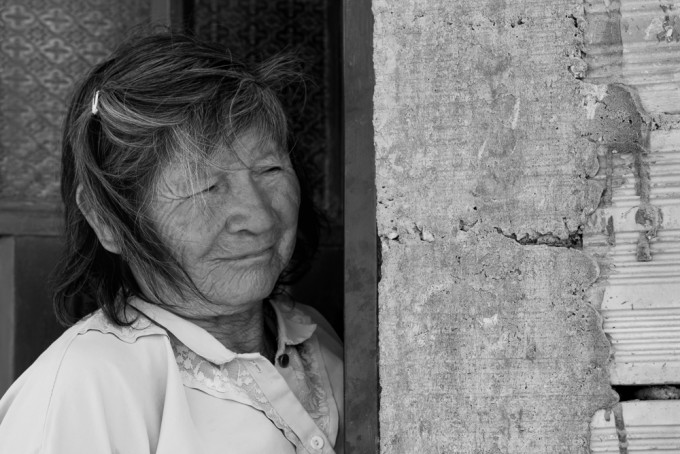Last Updated on 03/04/2016 by Chris Gampat
All images by Robert Pennington. Used with permission.
Robert Pennington is a documentary photographer and filmmaker as well as an educator and a graduate of New York University’s Tisch School of the Arts. I found his work on Fotofund, where he’s actively trying to raise funding for a project he’s working on. This project follows the plight of Los Desplazados–the displaced of Colombia. Like the Syrian refugees, they’re a large group of folks currently looking for a home.
Robert has experience doing this type of work. NO PLACE LIKE HOME, another one of Pennington’s projects, focuses on the refugee crisis in Europe. He splits his time between Brooklyn, NY and his home near Portland, Maine when not travelling for work.
Zero, his project highlighting Los Desplazados, has been partially shot; and we talked about the importance of it.
Phoblographer: Talk to us about how you got into photography.
Robert: As a child I was fascinated by the Polaroid camera and its process. Capturing a moment, gently pulling the exposure from the cartridge, shaking it like my father did and slowly peeling the top layer away, the image covered with a gray/blue haze and then, finally, the opacifier would slowly fade away – watching the image appear before my eyes was thrilling, it was like opening a gift – it was magic!
Later, when I went off to college and began taking photography classes, it was at this point I started to understand the creative process. I began to realize and appreciate the importance of patience with respect to creative process. And I was again taken by the magic that happens with the chemistry of photography. In the darkroom, akin to the Polaroid experience – watching the photograph come alive was very cool – even more so than with Polaroids, for I could alter the image.
I’ve continued to make pictures over the years but when I was 19 years old I went to NYU’s film school and later worked in New York as an editor for many years. Recently I returned to photography full time.
Phoblographer: What made you want to get into documentary work?
Robert: As mentioned, I worked for many years as an editor, mainly in New York, and the last 8-10 years primarily on documentary projects. So my interest and work as a documentary photographer was a natural progression from there.
With respect to documentary photography what I find both exciting and challenging is making photographs that reveal something authentic and, ultimately, illuminating a story. When I’m successful conveying a story through pictures it is immensely rewarding, for what interests me most in life are people and their stories, specifically people that are disenfranchised. I know it is a small contribution, but I feel it is an opportunity for me to give something to humanity.
Phoblographer: The Zero project is all about a displaced population living in Colombia, tells us a bit about them in your own words. What’s your connection to them?
Robert: Zero, is an outgrowth of NO PLACE LIKE HOME, a project in which I documented the refugee migration in eight different countries in Europe during the summer of 2015.
Zero is similar to the situation in Syria, parts of the Middle East and Africa in that people are forced to flee from their homes due to armed conflict and their situations are oftentimes tragic and dire.
With that said, there are a number of differences. The conflict has been going on for well over 50 years in Colombia. Los desplazados (the displaced) are referred to as “victims” by the Colombian government and their struggle is, at this point, a part of the culture in Colombia. Los desplazados are, in many respects, a forgotten part of society. Despite the recent attention in the press here in Colombia and abroad, the services often sighted by the government don’t effectively reach the displaced.
There are mainly three ethnic groups that are affected in Colombia: Afro-Colombians, the Indigenous and Campesinos (peasant farmers). The aforementioned groups have been forced from their fincas (farms) and land by left-wing guerilla groups and right-wing paramilitaries for many years. Land is coveted here in Colombia: land = power. Power is consolidated by growing and smuggling narcotics (mainly coca for cocaine production), trafficking arms and sometimes setting up legal enterprises such as palm oil plantations.
Since the 16th century Colombia has been a highly stratified society, which in my view has exacerbated the situation for the desplazados even more. Estratos (strata) is a ranking system that was introduced in the 1980’s. It was intended to be a way to identify and provide essential services such as water and electricity at affordable rates for the poor and barrios (neighborhoods) were zoned accordingly. The system ranked people and communities from one (the lowest) to six (the highest). Over the years a system once designed to help poor communities has instead marginalized an entire class of Colombians. The stigma could not be greater for los desplazados, whose unofficial ranking is zero.
Phoblographer: The media often focuses on the Syrian migrants, but the desplazados have been having their own problems for years too. Why do you think the mainstream media does nothing to cover them?
Robert: Well, I’m not sure I would say they’re not covered, but I would say, especially in the last six years or so, it’s been minimal. Some may argue this is not the case, because the situation is so highly politicized currently. The conflict and struggle of los desplazados is only now in the press in the United States because of the ongoing peace negotiations between the FARC (the largest left wing guerilla organization) and the Colombian government. And, as of late, the Plan Colombia initiative (a US bi-partisan effort to stem the drug trade) has transitioned to Peace Colombia (a combined effort to stem drug trade and support the peace process) as per the Obama administration.
With respect to media coverage, I believe the Colombian IDP (internally displaced persons) situation has not garnered the same media attention as the Syrian crisis because it is not happening in Europe. It is occurring in South America and, in my view, Colombia simply does not carry the same geo-political importance that a country like Syria or other Middle-Eastern countries currently do. Furthermore, the displaced in Colombia are internally displaced (they migrate within the borders of Colombia), and frankly, it does not present the same “wow factor” that the European crisis does – there are not 10,000 people waiting to cross the border from Greece into Macedonia. In no way minimizing the impact of the crisis in Europe, the latter makes for more dramatic news in all formats, especially television!
As part of my research I recently spoke to a Colombian, Diana Arango Gómez, Director of EQUITAS, an NGO based in Bogotá. Diana had worked in New York and Washington D.C. before returning to Colombia and, while in Washington, she worked to lobby for Colombian causes. In so many words the upshot of what she told me was that the situation in Colombia had been going on for so long she found nearly all politicians in Washington were simply not interested in hearing about Colombia anymore.
Phoblographer: Talk to us about funding for projects like this. How exactly do you go about budgeting yourself?
Robert: Well, I would say that to a large degree the project dictates the budget. With that said, I really try to be well researched, which helps with organization and, in turn, keeps costs down. I also try to budget time, locations and logistics. Meaning, if I’m in Buenaventura for example, I should plan to work in Chocó next, then travel onto Narińo. Because Chocó is closer to Buenaventura, this cuts down on travel costs and time – time and travel is money! Lastly, I would add discipline is key with everything. It is necessary to set aside time each day to work whether it is making pictures, meeting people, scouting, networking, managing social media or setting aside time to reflect and assimilate.
The actual funding is a continuously fluctuating combination that includes payment for speaking engagements, gifts, print sales and, currently, a crowdfunding campaign via FOTOFUND (en.fotofund.org/campaigns/zero/). Briefly, crowdfunding is the practice of funding a project by raising many small amounts of money from a large number of people, typically via the Internet. Fotofund is an innovative platform dedicated solely to supporting the work of photographers from around the world.
Phoblographer: You’ve done many documentary photo projects before, so when it came to this one how did you go about starting off? What kind of logistical planning was involved and what kind of images did you want to ensure you created?
Robert: As mentioned earlier, Zero is an outgrowth of NO PLACE LIKE HOME. My interests as a documentarian are people and their stories – and they must be conveyed truthfully. People fascinate me and the human condition is what inspires me; it’s been that way as long as I can remember. So for me, “the start” of any project needs to be a story that speaks to the human condition – the human condition is the most important ingredient and, more often than not, I am drawn to people who live in the margins.
I have always loved Latin America, the people, their traditions and the different cultures found here. While in Europe documenting the refugee crisis, I discovered the staggering IDP numbers in Colombia (over 6 million) and was compelled to learn more. Upon returning to the States I began to work on securing funding and was very fortunate to find benefactors who were interested in my work and the project. And, in December 2015, I flew to Bogotá where I spent a month and formally began researching, planning and meeting with Colombianos from all walks of life: desplazados, academics, taxi drivers, baristas and civil servants – it didn’t take long – I was hooked and Zero was born.
With respect to the second part of your question regarding imagery, despite thematic similarities to NO PLACE LIKE HOME (loss of home and the fight for survival), my intention is to live with los desplazados and so Zero differs in many ways, specifically in scope and sensibility, for it is intended to be an intimate and evocative study of what it is to be displaced.
Phoblographer: Over your time of doing documentary projects, what are some of the biggest lessons that you’ve learned?
Robert: Never assume or project what you think you understand about a people, a situation or an environment until you have taken the time to truly contemplate your work within that context. I feel it is imperative to reflect upon the above-mentioned, it is part of the work as a documentarian. I made this mistake many years ago in India thinking, “These poor people, they only have X and they don’t have Y.” The fact is the family from Maharashtra I’m referencing were happy and loving, they had everything they wanted and, more importantly, everything they needed. The dirt floor in their home and lack of running water was part of life for them. In their context, it was acceptable and they were content.
Phoblographer: What do you plan to do with this project and how are you going to get the word out there about it?
Robert: Networking, networking, networking. I am and will use any and all venues I can; my website, Facebook page , Instagram, blog, word of mouth, emails – anyone I can find that will give me time to show the work and talk about it – I’ll take it! I’ve done a few presentations and interviews about the project and, to help support the next phase of this work, I’ve started a crowdfunding campaign via FOTOFUND as well. Any and all donations and sharing of the campaign are welcome and appreciated!


